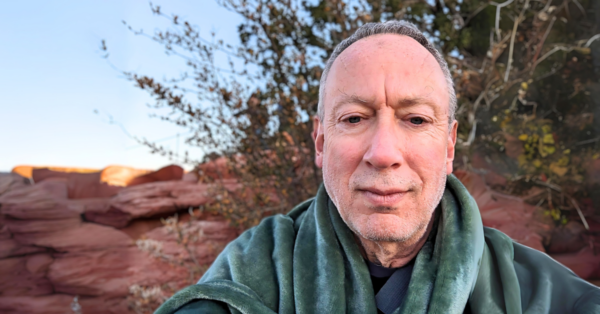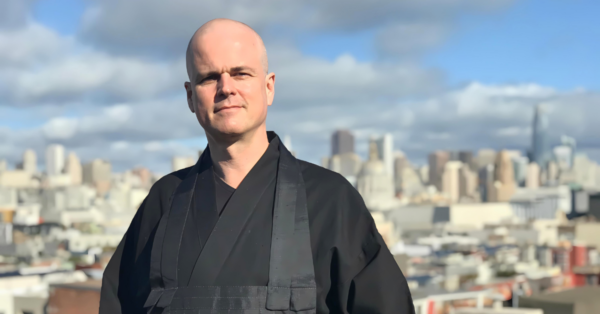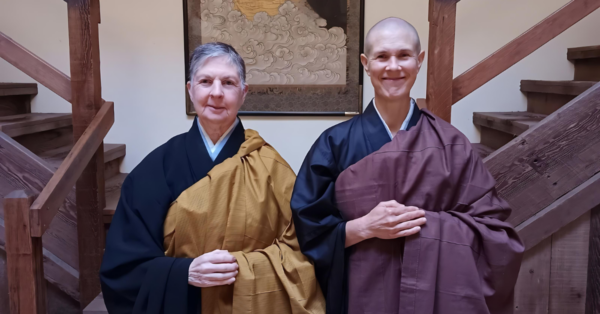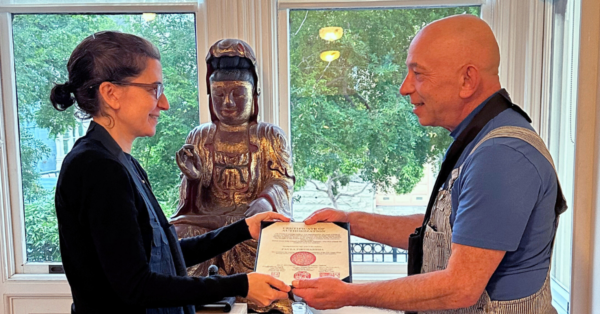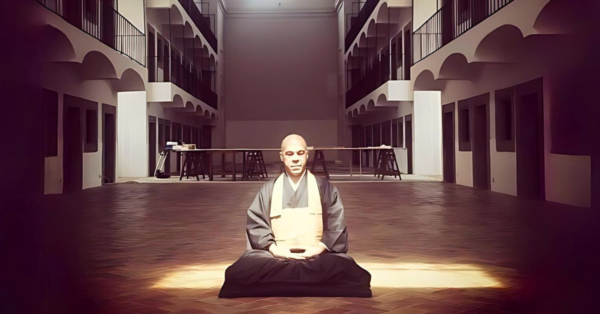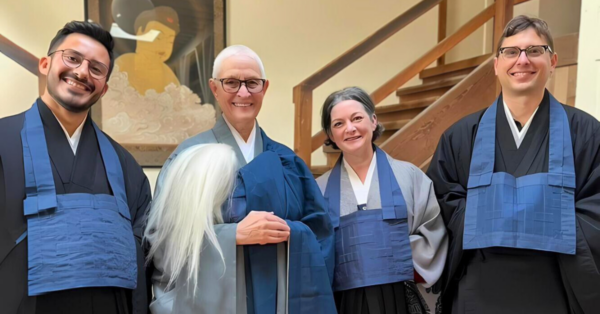 by Sachico Ohanks, SFZC Program Communications Coordinator
by Sachico Ohanks, SFZC Program Communications Coordinator
Listening to Sojun Mel Weitsman recall his experience as Suzuki Roshi’s student is the closest I will ever get to meeting Suzuki Roshi himself. And, perhaps had I met him in person, I might have been one of the ones who wandered off after morning zazen and didn’t return, too agitated to stay put, too eager to pour my bustling energy into worldly pursuits. But Mel, he was one of the ones who returned again and again to morning zazen with this unknown teacher of a strange practice. He returned until his ankles stopped hurting in zazen and his thoughts emptied out and he knew that his constant search for a spiritual practice was over.
What was it like to study with Suzuki Roshi in the early days?
When I arrived in 1964, there was only Zen Center at Sokoji Temple at 1881 Bush Street. Suzuki Roshi had arrived in 1959. He sat zazen every morning at 5:45 am. The Japanese congregation had given him the upstairs room for zazen. It’s a very nice room. It had half-round windows starting from the floor that came up to about your waist and really nice light. There were no zabutons. So, we would sit zazen on tatamis and sometimes just on the floor on goza mats. That’s what we would bow on and sometimes sit zazen on. We would lay out the goza mats and later put them back.
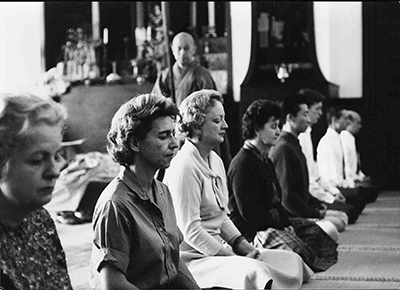
None of us could sit zazen very well. It was hard on our ankle bones (laughs). At that time there were very few people who could sit well. So we all had a very difficult time sitting and that was very much the feeling, that it was really hard to do zazen, because we didn’t have the experience. Suzuki Roshi used to urge us on: “Don’t move.” Sometimes we’d be sitting and after 40 minutes, just before it was time to ring the bell, he would say, “We will sit ten minutes longer†(laughs). And so it was a wonderful surprise (laughs).
Sometimes people remember him walking out and then coming back an hour later (laughs). He was trying to help everybody let go of their attachments to their physical condition, like pain. Zazen was a lot about how to be one with the pain, so that you are not creating an opposition. As long as there is no opposition there is no problem. When you create opposition—I want something different, I want it to change, I want to get out of there or escape—then it becomes a problem.  So that’s what he was silently teaching us.
He would give a talk once a week. I remember he gave a talk from the Blue Cliff Record once a week. He went through the whole Blue Cliff Record. He would have Wednesday night discussion, and Mrs. Suzuki would serve tea.
What kind of things would come up in the discussion?
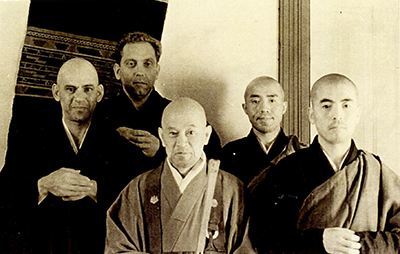
All kinds of questions that people had. I once asked him, “What is nirvana?” And he said, “Seeing one thing through to the end.â€
His whole teaching centered around just doing. Not doing something for some other reason. Not doing zazen to get something out of it. Just to do the practice for the sake of the practice. The practice just continued forever. There’s no end to the practice.
The practice you describe would seem to require a lot of patience from a teacher. And yet, a teacher with extensive training, like Suzuki Roshi, might have preferred to teach more advanced topics to more developed students.
Patience was what he was teaching us. Sesshin was big patience (laughs). Zazen, small patience. Everyday practice, small patience. But sesshin, big patience. Patience doesn’t mean waiting for something. It simply means being where you are without trying to escape.
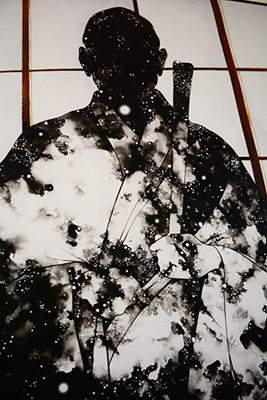
The way that Suzuki Roshi taught, was it different than how he was taught in Japan?
Oh no. He would say, “The only thing I have to give you is my Zen spirit. I am giving you what I know and what I was taught. Then you have to find your own way.â€
Were there many students who did not stick with it?
Well, you know, there are always students who don’t stick with it. The thing about practice is that every Saturday you give zazen instruction to new people, and every once and a while someone will stay (laughs).
What kind of student were you back in those early days of your practice?
Well, I was an artist.
Were you a painter?
Yes, but I was always looking for some spiritual practice. So when I came to sit, it wasn’t very long before I realized that this is exactly what I was looking for.
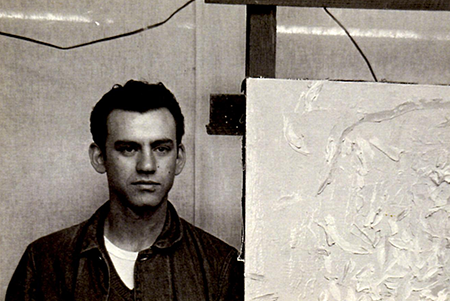
How did you know?
Oh, I just knew. It just felt right.
When you met Suzuki Roshi did you recognize something in him?
Well, you know, he was a nice man (laughs).
But, you didn’t say to yourself, “Wow!â€
No, there was nothing like that. He was Reverend Suzuki. It would always take a little while before people recognized who he was because his teaching, his presence, was subtle. He wasn’t dynamic. Matter of fact, he was very slow and easy going. You wouldn’t ordinarily be astonished by him or anything like that.
We just observed the way he was. The way he sat down and stood up; it was all very easy, very smooth, and he was always right in time. He would never get ahead of himself or behind. He was always right present, in time. And that was pretty remarkable [to observe] because he didn’t have anything that was driving him, and he didn’t have anything that was holding him back.
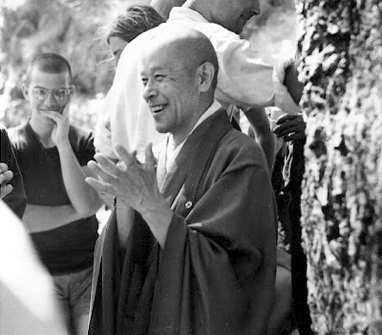 It’s interesting that you say he didn’t have anything driving him, and yet he opened three centers.
It’s interesting that you say he didn’t have anything driving him, and yet he opened three centers.
He didn’t do anything. He didn’t open anything. He was just there. He was just the inspiration. The students did everything. He didn’t open a center. He didn’t write a book. The students did all of that.
It was difficult for Suzuki Roshi at Sokoji. Because people wanted to sit with him, the Sokoji congregation gave him the room to do zazen but the congregation didn’t sit zazen. The Japanese didn’t do any zazen. They just did a kind of Sunday church.
But people heard that there was a Zen priest in town. So they called him up and he said, “Well, you can come over and sit with me. I sit every day at 5:45 am.” Of course, he also sat in the afternoon. Little by little Americans would come and that’s how Zen Center started. So, there were two different congregations, the Japanese and the American.
Then people wanted to find a place that was their own. So they did that; he didn’t do it. And that was Page Street. And then they wanted a monastery, so Richard Baker and some people, we found a place called Tassajara. And Suzuki went along with all of that. He was not assertive in that way. He was just present (chuckles). It’s amazing, actually.
 What Suzuki Roshi did was always sit zazen twice a day. Katagiri Roshi was there at the time. He was Suzuki Roshi’s assistant. So Suzuki Roshi and Katagiri Roshi kind of acted out these roles of teacher and student, even though Katagiri already had dharma transmission. But, Suzuki Roshi was the leader and Katagiri Roshi did the bells and worked the mokugyo and did the chanting. So we could see the way they interacted and that was a teaching for us.
What Suzuki Roshi did was always sit zazen twice a day. Katagiri Roshi was there at the time. He was Suzuki Roshi’s assistant. So Suzuki Roshi and Katagiri Roshi kind of acted out these roles of teacher and student, even though Katagiri already had dharma transmission. But, Suzuki Roshi was the leader and Katagiri Roshi did the bells and worked the mokugyo and did the chanting. So we could see the way they interacted and that was a teaching for us.
You have dedicated your life to teaching Zen Buddhism. You have been the abbot of Berkeley Zen Center since 1985, you were co-abbot at San Francisco Zen Center for almost a decade, and you have ordained an entire generation of people. Looking back over the years would you say that your relationship to Suzuki Roshi’s teachings has changed over time?
No (laughs). Nothing’s changed. It’s always been the same. But I think it has matured in some way, but I can’t tell you how (laughs).
I have always used Suzuki Roshi as an example. And, I never changed anything. I have never introduced anything new or some outside source.
Have you ever found that something he said to you comes to you now with a deeper understanding?
He walked up to me one day and said, “Just being alive is enough.†That has always been a touchstone for me. To keep the practice as simple as possible and not add things to it and not try to expand it in some way.  To take the simplest practice and let it mature.
I read that Suzuki Roshi said something to the effect that it’s hard to keep your practice pure.
Purity. Yes, it’s in Zen Mind, Beginner’s Mind in the introduction. Practice is hard, but not because of the pain in your leg. It’s hard keeping your practice pure, and keeping your practice pure means not falling into duality. Purity means non-duality in that sense, even though we live in a dualistic world.
One of the things I marvel at is the impact of mass shifts, such as a social movement or something like gentrification, and the challenge of being an individual trying to relate to the mass effect of the many other individuals.
He always talked about the discriminating mind. Not giving way to the discriminating mind. And zazen is the teacher. Everyone receives Buddha’s teaching through zazen; that’s why zazen is so important. And the teaching we receive through zazen is the teaching of non-duality. As soon as you fall into duality, you can’t sit very long (chuckles). So that’s discriminating mind. Discriminating mind is divisive; it divides.  Discrimination means to divide, to separate. Zazen is unity, within diversity. Diversity within unity. It’s a simple Mahayana teaching.
I wonder about concerns like national heritage, or a preference, like a political preference, and how asserting these concerns can be viewed as creating duality.
Yes. We live in a dualistic world, no doubt about it. It is very unusual to have a practice that is no discrimination. So, Suzuki Roshi would talk about “Big Mind,” which is the mind that is free from discrimination but includes everything. The main thing is, what is proper discrimination? How to discriminate on the basis of nondiscrimination (chuckles). He just kept to this very simple principle and that’s our practice.
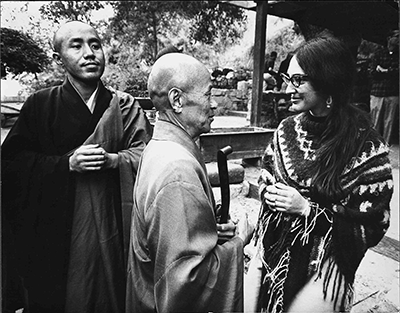 Most Japanese teachers have some connection with Japan. Suzuki Roshi never mentioned his connection with Japan. He didn’t have that kind of connection. He was a temple priest and he was here on his own. The congregation extended an invitation for a priest, and he said, I’d like to do that. He didn’t try to make us be Japanese students.
Most Japanese teachers have some connection with Japan. Suzuki Roshi never mentioned his connection with Japan. He didn’t have that kind of connection. He was a temple priest and he was here on his own. The congregation extended an invitation for a priest, and he said, I’d like to do that. He didn’t try to make us be Japanese students.
You mention national identity. Suzuki Roshi was not nationalistic; he became a US citizen. At first he wanted to send his students to Japan to experience Eihei-ji monastery. But it was always a disaster (laughs). So he stopped doing that; he lost too many students. He appreciated us because we didn’t know anything. We didn’t have any ties. We didn’t have any ideas. We didn’t have any baggage that was Buddhist or Japanese. So he could let us form ourselves from scratch.
That was the asset that we had. We didn’t know anything, and he could just give us the pure teaching, without any cultural background—even though we were practicing in a tradition that comes from Japan with formalities and the customary way things are done. But that in itself is a teaching.
You mean, within the forms or formalities there is freedom.
Yes. Freedom from, rather than freedom to do what you want. Freedom from the bondage of your own chains.
I understand that Suzuki Roshi liked to move the rocks at Tassajara. It’s interesting because this is one of the few activities I have heard of which sounds like a personal pastime that he enjoyed.
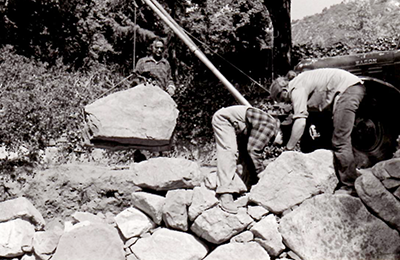 We always moved rocks at that time because we were making rock walls and stuff. We had a Dodge Power Wagon, which was kind of like a dump truck, and Paul Discoe built a winch on the back. And we had the cut-off top of a car, which we turned upside down and turned it into a sled. Then we hauled these rocks up on the sled and carried them wherever we needed them. So, that was everybody. For whoever worked on rocks, that was our recreational fun (laughs).
We always moved rocks at that time because we were making rock walls and stuff. We had a Dodge Power Wagon, which was kind of like a dump truck, and Paul Discoe built a winch on the back. And we had the cut-off top of a car, which we turned upside down and turned it into a sled. Then we hauled these rocks up on the sled and carried them wherever we needed them. So, that was everybody. For whoever worked on rocks, that was our recreational fun (laughs).
I wondered if Suzuki Roshi moved the rocks by the Kaisando as a form of aesthetics.
No. He said he thought about moving things around aesthetically but said, “This place has its own aesthetics†(laughs). “There’s nothing I can do to improve it.â€
______________________________________________________________
On the wall of Sojun’s office is a framed photo of Sojun and Suzuki Roshi. Suzuki Roshi stands over Sojun’s clean-shaven head with a razor, and although the photo is in black and white, their robes look rich with graceful folds of fabric against the stark walls of the zendo. Sojun’s smooth young profile is lowered, completely absorbed in the moment, being right present, right in time.
Sojun Mel Weitsman will be leading Presenting Suzuki Roshi’s Teachings from Friday, August 29, through Monday, September 1, at Tassajara Zen Mountain Center.
(Watercolor silhouette of Suzuki Roshi by Narcissus Quagliata.)



